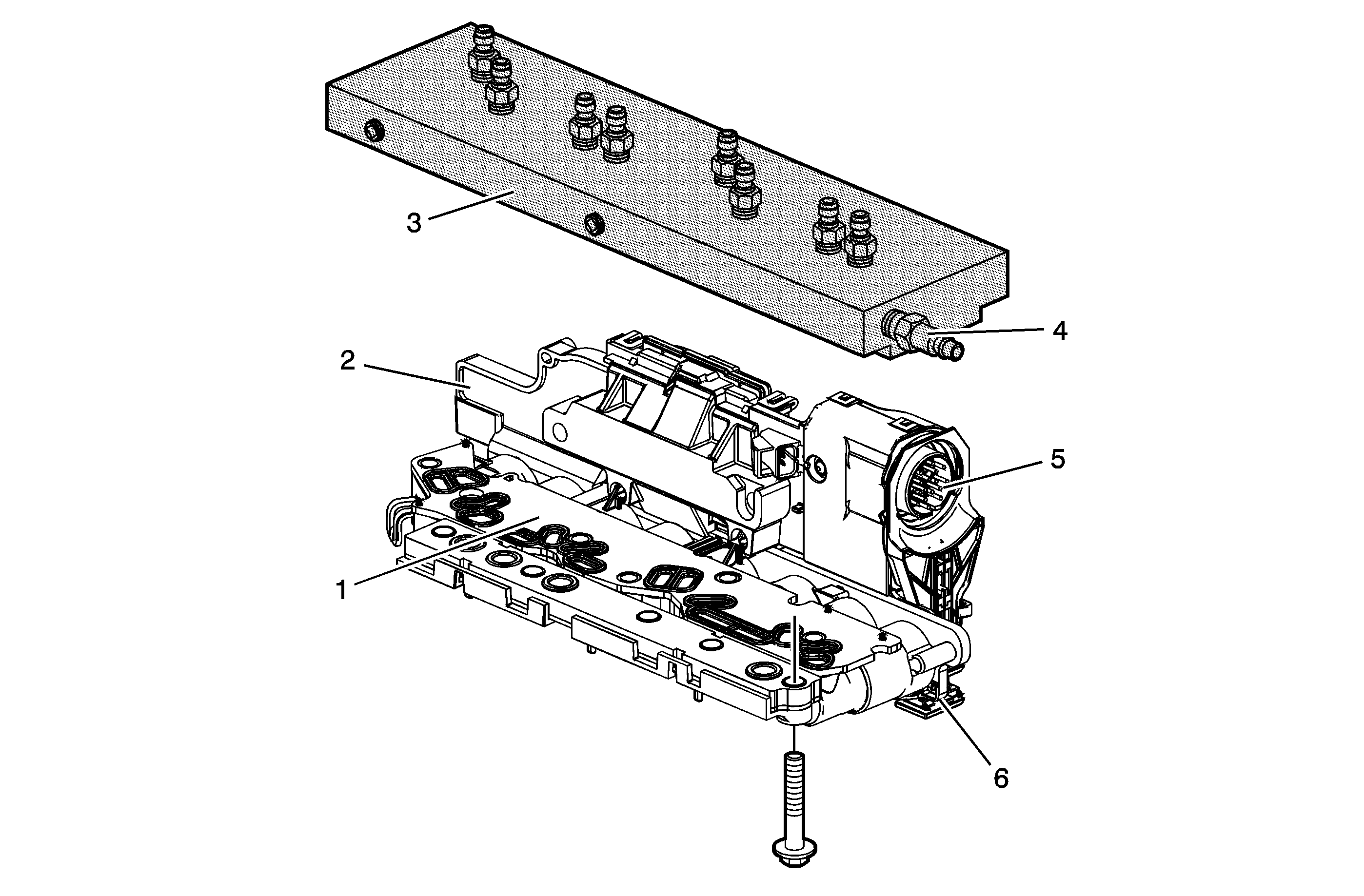Tools Required
DT-47825
Control Solenoid Test Plate
The purpose of this procedure is to test the operation of the control solenoid (w/body and TCM) valve assembly for a stuck open or stuck closed solenoid. The
DT-47825
bolts to the mounting surface
of the control solenoid (w/body and TCM) valve assembly. Compressed air is attached to the test block, through the control solenoid (w/body and TCM) valve assembly solenoid passage and back to a pressure gage on the test plate, sent through the control solenoid
(w/body and TCM) valve assembly solenoid, and back to the test plate pressure port.
An air pressure gage is used to display the air passing through the solenoid. If the solenoid is unable to allow air through or the air is constantly flowing through the solenoid may be stuck. The scan tool is used to command the solenoids On and Off while
watching the air pressure test gage to determine if the solenoid is functioning correctly. The recommended shop air pressure for this test is 620.5-689.4 Kpa (90-100 psi).
Control Solenoid (w/Body and TCM) Valve Assembly with Control Solenoid Test Plate


